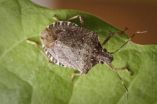(Press-News.org) In the cells of humans and other organisms, only a subset of genes are active at any given time, depending largely on the stage of life and the particular duties of the cell. Cells use different molecular mechanisms to orchestrate the activation and deactivation of genes as needed. One central mechanism is an intricate DNA packaging system that either shields genes from activation or exposes them for use.
In this system, the DNA strand, with its genes, is coiled around molecules known as histones, which themselves are assembled into larger entities called nucleosomes. Together, nucleosomes and DNA form chromatin, which is the primary substance of chromosomes. This DNA-packaging system is vital for managing development and maintaining health. When it goes awry, cancer can be the result.
In a study published in Molecular Cell this month, Alexei V. Tulin, PhD, Associate Professor at Fox Chase Cancer Center, and colleagues reported that chemical modification of one type of histone—called H2Av—leads to substantial changes in nucleosome shape. As a consequence, a previously hidden portion of the nucleosome becomes exposed. This newly exposed portion interacts with and activates an enzyme called PARP1. Upon activation, PARP1 assembles long branching molecules of Poly(ADP-ribose), which appear to open the DNA packaging around the site of the PARP1 activation, exposing specific genes for activation.
"Currently, the nucleosome is often portrayed as a stable, inert structure, or a tiny ball," Tulin says. "We found that the nucleosome is actually a quite dynamic structure. When we modified one histone, we changed the whole nucleosome."
In addition to reevaluating how histones control gene activation, the study also reports a new mechanism of PARP1 regulation. Many standard cancer treatments, including chemotherapy drugs and radiation therapy, damage the DNA of rapidly dividing cancer cells. However, the effectiveness of these treatments is limited. Research has suggested that standard therapies combined with drugs that inhibit PARP1 can kill cancer cells, but clinical trials testing PARP1 inhibitors in cancer patients have produced disappointing outcomes. "I believe that to a large extent the previous setbacks were caused by a general misconception of the role of PARP1 in living cells and the mechanisms of PARP1 regulation," Tulin says. "Now that we know this mechanism of PARP1 regulation, we can design approaches to inhibit this protein in an effective way to better treat cancer."
The ability of PARP1 to control cellular processes is regulated by nucleosomes—the basic unit of DNA packaging, consisting of a segment of DNA wound in sequence around eight histone protein cores, similar to a thread wrapped around a spool. Histones undergo different chemical modifications that play an important role in regulating the activity of genes. Through this mechanism, histones control the ability of PARP1 to activate genes and repair DNA damage.
"This mechanism of PARP1 regulation by histones is still very new," Tulin says. "People believe that PARP1 is mainly activated through interactions with DNA, but we have found that the main pathway of PARP1 activation is through interactions with the nucleosome." In the new study, Tulin and his colleagues reevaluated how PARP1 is activated by changes in the nucleosome. They found that the addition of a phosphate group to a histone—called H2Av—triggered the entire nucleosome to change shape, exposing previously hidden parts of the nucleosome that began to interact with and activate PARP1.
To follow up on these findings, Tulin and his team are now developing the next generation of PARP1 inhibitors. Designed to block the newly identified mechanism of PARP1 activation, these new inhibitors will specifically target PARP1, in contrast to the PARP1 inhibitors currently being tested in clinical trials.
"We expect that our targeted PARP1 inhibitors will be more effective at killing cancer cells while protecting important molecular pathways in normal cells," Tulin says. "For this reason, we believe that the specific inhibitors we are designing hold great promise for cancer treatment."
INFORMATION:
Co-investigators on the study include Colin J. Thomas, Elena Kotova, Mark Andrake, and Jared Adolf-Bryfogle of Fox Chase; Robert Glaser of the New York State Department of Health in Albany; and Catherine Regnard of Ludwig Maximilian University in Munich, Germany. This research was supported by grants from the National Institutes of Health (R01 GM077452 and R01 DK082623) to Tulin.
Fox Chase Cancer Center, part of the Temple University Health System, is one of the leading cancer research and treatment centers in the United States. Founded in 1904 in Philadelphia as one of the nation's first cancer hospitals, Fox Chase was also among the first institutions to be designated a National Cancer Institute Comprehensive Cancer Center in 1974. Fox Chase researchers have won the highest awards in their fields, including two Nobel Prizes. Fox Chase physicians are also routinely recognized in national rankings, and the Center's nursing program has received the Magnet recognition for excellence four consecutive times. Today, Fox Chase conducts a broad array of nationally competitive basic, translational, and clinical research, with special programs in cancer prevention, detection, survivorship, and community outreach. For more information, call 1-888-FOX CHASE or (1-888-369-2427).
Fox Chase researchers discover new mechanism of gene regulation
2014-02-26
ELSE PRESS RELEASES FROM THIS DATE:
Harvested rainwater harbors pathogens
2014-02-26
South Africa has been financing domestic rainwater harvesting tanks in informal low-income settlements and rural areas in five of that nation's nine provinces. But pathogens inhabit such harvested rainwater, potentially posing a public health hazard, especially for children and immunocompromised individuals, according to a team from the University of Stellenbosch. The research was published ahead of print in Applied and Environmental Microbiology.
International studies had indicated that harvested rainwater frequently harbors pathogens, and that, in light of the financing ...
No warming hiatus for extreme hot temperatures
2014-02-26
Extremely hot temperatures over land have dramatically and unequivocally increased in number and area despite claims that the rise in global average temperatures has slowed over the past 10 to 20 years.
Scientists from the ARC Centre of Excellence for Climate System Science and international colleagues made the finding when they focused their research on the rise of temperatures at the extreme end of the spectrum where impacts are felt the most.
"It quickly became clear, the so-called "hiatus" in global average temperatures did not stop the rise in the number, intensity ...
Beta-catenin alters T cells in lasting and harmful ways
2014-02-26
Activation of beta-catenin, the primary mediator of the ubiquitous Wnt signaling pathway, alters the immune system in lasting and harmful ways, a team of Chicago-based researchers demonstrate in the February 26, 2014, issue of Science Translational Medicine.
An increase in beta-catenin in certain types of T cells—a class of white blood cells—causes chronic inflammation in the intestine and colon, eventually leading to cancer. The same mechanism is used by colon cancer to propagate itself. The researchers combine data from patients suffering from colitis or colon cancer ...
Hubble monitors supernova in nearby galaxy M82
2014-02-26
This is a Hubble Space Telescope composite image of a supernova explosion designated SN 2014J in the galaxy M82. At a distance of approximately 11.5 million light-years from Earth it is the closest supernova of its type discovered in the past few decades. The explosion is categorized as a Type Ia supernova, which is theorized to be triggered in binary systems consisting of a white dwarf and another star — which could be a second white dwarf, a star like our sun, or a giant star.
Astronomers using a ground-based telescope discovered the explosion on January 21, 2014. This ...
Characterization of stink bug saliva proteins opens door to controlling pests
2014-02-26
Brown marmorated stink bugs cause millions of dollars in crop losses across the United States because of the damage their saliva does to plant tissues. Researchers at Penn State have developed methods to extract the insect saliva and identify the major protein components, which could lead to new pest control approaches.
"Until now, essentially nothing was known about the composition of stink bug saliva, which is surprising given the importance of these insects as pests and the fact that their saliva is the primary cause of feeding injury to plants and crop losses," said ...
New data book outlines Hispanic/Latino health
2014-02-26
The National Heart, Lung, and Blood Institute, part of the National Institutes of Health, released the largest and most comprehensive health and lifestyle analysis of people from a range of Hispanic/Latino origins. The data will enable individuals, communities, and policy makers to tailor better health intervention strategies.
"This study lays the foundation for future research on the possible causes of chronic diseases and ways to prevent them, and to help us understand the reasons why Hispanics and Latinos live longer than the general population," said Gregory Talavera, ...
Research maze puts images on floor, where rodents look
2014-02-26
PROVIDENCE, R.I. [Brown University] — A rodent in a maze is a staple — even a stereotype — of experimental psychology research. But the maze in the lab of Rebecca Burwell, professor of cognitive, linguistic, and psychological sciences at Brown University, is not your grandfather's apparatus. In a new video article published in the Journal of Visualized Experiments, Burwell's research group demonstrates in full detail how the maze can be used to perform automated visual cognitive research tasks with great efficiency.
The article is available here: http://www.jove.com/video/51316/automated-visual-cognitive-tasks-for-recording-neural-activity-using
The ...
Mayo Clinic discovers African-Americans respond better to rubella vaccine
2014-02-26
ROCHESTER, Minn. — Feb. 26, 2014 — Somali Americans develop twice the antibody response to rubella from the current vaccine compared to Caucasians in a new Mayo Clinic study on individualized aspects of immune response. A non-Somali, African-American cohort ranked next in immune response, still significantly higher than Caucasians, and Hispanic Americans in the study were least responsive to the vaccine. The findings appear in the journal Vaccine.
"This is fascinating," says Gregory Poland, M.D., Mayo Clinic vaccinologist and senior author of the study. "We don't know ...
JILA physicists discover 'quantum droplet' in semiconductor
2014-02-26
BOULDER, Colo -- JILA physicists used an ultrafast laser and help from German theorists to discover a new semiconductor quasiparticle—a handful of smaller particles that briefly condense into a liquid-like droplet.
Quasiparticles are composites of smaller particles that can be created inside solid materials and act together in a predictable way. A simple example is the exciton, a pairing, due to electrostatic forces, of an electron and a so-called "hole," a place in the material's energy structure where an electron could be, but isn't.
The new quasiparticle, described ...
Pine forest particles appear out of thin air, influence climate
2014-02-26
Pine forests are especially magical places for atmospheric chemists. Coniferous trees give off pine-scented vapors that form particles, very quickly and seemingly out of nowhere.
New research by German, Finnish and U.S. scientists elucidates the process by which gas wafting from coniferous trees creates particles that can reflect sunlight or promote cloud formation, both important climate feedbacks. The study is published Feb. 27 in Nature.
"In many forested regions, you can go and observe particles apparently form from thin air. They're not emitted from anything, ...




